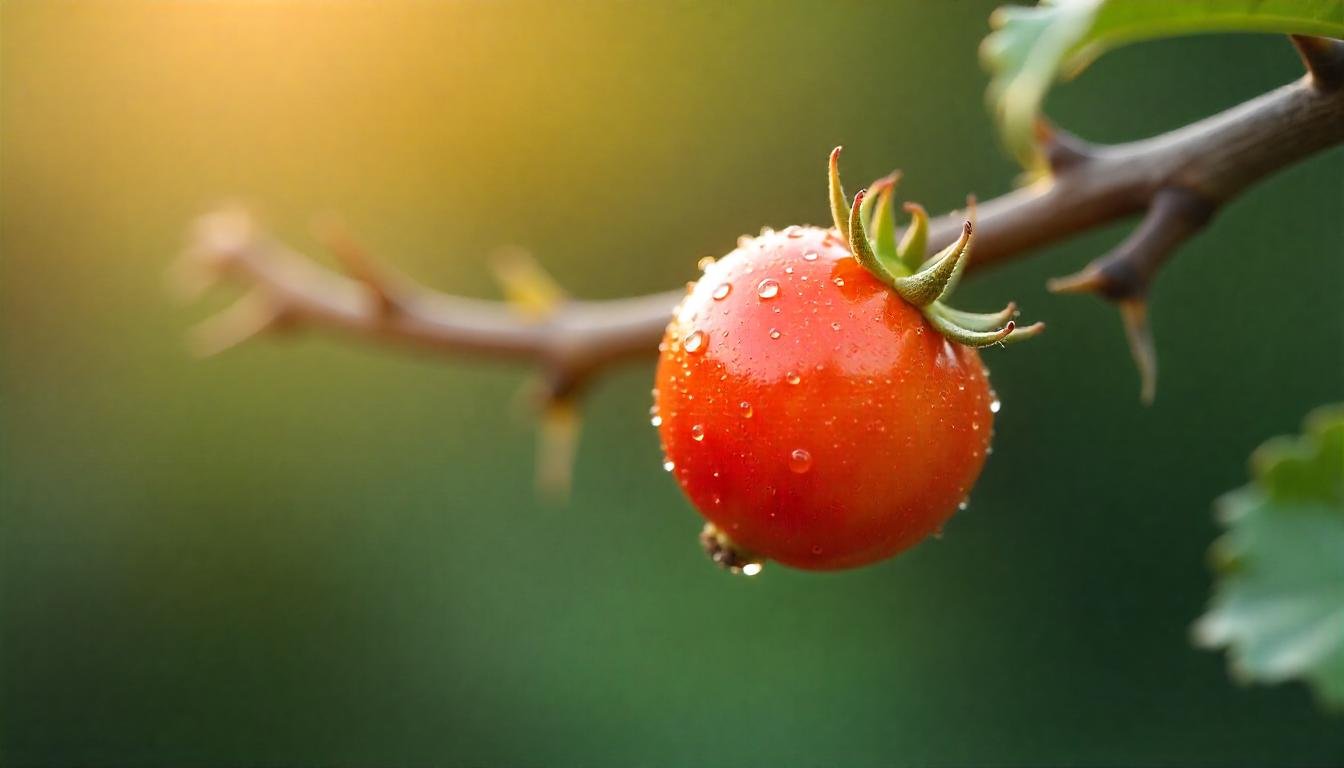Žižole, commonly known as jujube, is a fruit cherished for centuries across various cultures. It is particularly valued in the Mediterranean, the Balkans, and Asia. This small, sweet fruit belongs to the Rhamnaceae family. Despite its merits, it has often been overshadowed by more popular fruits in the global market. However, its rich history and cultural significance make it noteworthy. Additionally, it offers impressive health benefits. We will explore the cultural, botanical, and nutritional significance of žižole. It aims to highlight why this forgotten fruit deserves a place in our diets and gardens.
Etymology & Regional Names
The term “žižole” originates from the Latin name for the fruit, Ziziphus jujuba. The history of the term identifies the fruit’s long history in different cultures. In English, it is referred to as jujube, while in Italian, it is known as giuggiole. The Chinese name for the fruit, 红枣 (hóngzǎo), translates to “red date,” highlighting its importance in Chinese cuisine and traditional medicine.
Historically, the name has evolved as the fruit spread across different regions, adapting to local languages and cultures. The jujube tree has been cultivated for over 4,000 years, with references found in ancient texts, indicating its significance in various civilizations. This rich linguistic tapestry underscores the fruit’s global journey and its enduring relevance.
Botanical Description
Žižole is a member of the Rhamnaceae family and the Ziziphus genus. The jujube tree is a deciduous shrub that grows up to 10 meters in height, with a rounded crown and spiny branches. Its leaves are glossy, oval-shaped, and typically measure between 2 to 7 centimeters in length. The tree blooms in late spring, producing small, yellow-green flowers that are often overlooked due to their modest appearance.
The fruit itself is a drupe, initially green and maturing to a deep reddish-brown or dark purple hue. It is about the size of a small olive, with a sweet, chewy texture reminiscent of dates. The taste varies from mildly sweet to intensely sugary, depending on the variety and ripeness. The unique flavor profile and texture make žižole a versatile ingredient in various culinary applications.
Cultural and Historical Significance
Žižole has a rich cultural and historical significance that spans multiple regions. In folklore, the fruit is often associated with prosperity and good fortune. In many cultures, it is believed to bring happiness and is used in traditional medicine to treat various ailments. For instance, in Chinese medicine, jujubes are used to nourish the blood and calm the mind, making them a popular remedy for insomnia and anxiety.
The fruit has also made its way into literature and historical texts. Ancient Chinese texts reference jujubes as a symbol of longevity and health. In the Mediterranean, traditional festivals celebrate the harvest of žižole. Communities gather to enjoy the fruit in various forms, including fresh and dried.
Health Benefits & Nutritional Value
Žižole is not only culturally significant but also packed with health benefits. It is rich in vitamin C, antioxidants, and essential minerals such as potassium, magnesium, and iron. These nutrients contribute to its reputation as a superfood, promoting overall health and well-being.
Research has shown that jujubes can have a positive impact on sleep quality, digestion, and immune function. The fruit contains compounds that may help reduce anxiety and improve sleep, making it a natural remedy for those struggling with insomnia. Additionally, its high fiber content aids in digestion, while its antioxidant properties help combat oxidative stress in the body.
Several scientific studies support these claims, highlighting the potential of žižole as a functional food that can enhance health and prevent chronic diseases.
Culinary Uses
Žižole can be enjoyed in various forms, making it a versatile ingredient in the kitchen. It can be eaten fresh, dried, or used to prepare teas, jams, and sweets. The fruit when dried is especially sought after across many cultures, being used in conventional meals or as a snack. In culinary applications, jujubes can be incorporated into salads, smoothies, and baked goods, adding a natural sweetness and chewy texture. Their flavor profile pairs well with nuts, yogurt, and spices, making them a delightful addition to both sweet and savory dishes. Traditional recipes often highlight the fruit’s unique taste, showcasing its versatility in various cuisines.
Growing and Harvesting
Growing žižole requires specific conditions to thrive. The jujube tree prefers well-drained soil and a sunny location, making it suitable for Mediterranean climates. It is drought-resistant and can tolerate poor soil conditions, making it an excellent choice for home gardeners looking for low-maintenance fruit trees.
Jujubes are usually harvested when they are fully ripe, as this is when they develop their characteristic sweetness. For home gardeners, it is essential to monitor the fruit closely, as they can quickly become overripe and fall from the tree.
For those interested in cultivating žižole, it is advisable to plant the tree in a sunny spot and provide adequate water during the growing season. With proper care, the jujube tree can yield a bountiful harvest for years to come.
Žižole in Modern Context
In recent years, there has been a resurgence of interest in žižole, particularly as health food trends continue to rise. The fruit’s nutritional profile and health benefits have caught the attention of health-conscious consumers, leading to increased availability in markets and health food stores.
As more people seek out natural and nutrient-dense foods, jujubes are becoming more popular in various forms, from dried snacks to health supplements. This renewed interest presents an opportunity to celebrate and preserve the cultural heritage associated with žižole while promoting its health benefits to a broader audience.
Conclusion
In conclusion, žižole, or jujube, is a forgotten Mediterranean fruit that holds immense cultural, botanical, and nutritional significance. Its rich history, health benefits, and culinary versatility make it a unique addition to any diet. As we continue to explore and celebrate the diverse fruits of our world, it is essential to recognize the importance of preserving traditional knowledge and practices associated with žižole.
We encourage readers to try this remarkable fruit, whether by incorporating it into their diets or even planting a jujube tree in their gardens. By doing so, we can help ensure that this ancient fruit remains a cherished part of our culinary and cultural landscape for generations to come.














Post Comment